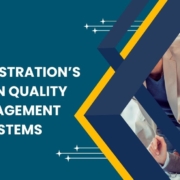ISO 14001 Certification: Your Roadmap to Greener Operations and Fewer Headaches
Why Environmental Management Isn’t Just Tree-Hugging
You know what’s tough? Running a site—whether it’s a factory, warehouse, or construction yard—while keeping regulators, stakeholders, and Mother Nature happy. One misstep, like a spill or excessive emissions, can lead to fines, bad press, or worse, a shutdown. In 2024, the EPA reported over $1.2 billion in fines for environmental violations in the U.S. alone. That’s not pocket change. So, how do you stay ahead of the game?
ISO 14001 is the gold standard for environmental management systems (EMS). It’s a framework that helps you identify, manage, and reduce environmental risks at your site. Think of it like a fitness plan for your operations—structured, measurable, and designed to keep you in top shape. For site managers, it’s a lifeline to ensure compliance, cut costs, and show the world you’re serious about sustainability.
What’s ISO 14001 All About?
Here’s the deal: ISO 14001, set by the International Organization for Standardization, is a globally recognized standard for managing environmental impact. Born in 1996 and updated in 2015, it’s built to fit any industry—manufacturing, construction, logistics, you name it. The goal? To help you run your site in a way that minimizes harm to the environment while boosting efficiency.
The standard revolves around a few key ideas:
- Plan: Identify environmental risks (like waste runoff or energy overuse) and set clear goals.
- Do: Put your plan into action with procedures and training.
- Check: Monitor your performance with audits and metrics.
- Act: Fix issues and keep improving.
It’s like a recipe for a killer stew—simple ingredients, but the magic happens when you follow the steps. ISO 14001 gives you a structured way to tackle everything from air pollution to water usage, all while keeping regulators off your back.
Why Should You Care? The Stakes Are High
Let’s be honest—environmental mishaps hit hard. A chemical spill can cost millions in cleanup and fines. A bad reputation can scare off customers faster than a summer storm. I once knew a site manager at a small manufacturing plant who faced a $500,000 fine for improper waste disposal. The worst part? It could’ve been avoided with a solid EMS. ISO 14001 certification helps you dodge those bullets by catching risks before they become disasters.
But it’s not just about avoiding trouble. There’s an emotional side, too. You’re not just managing a site; you’re shaping the world around you. Knowing your operations aren’t choking the planet feels good, doesn’t it? Plus, your employees take pride in working for a company that cares. It’s like planting a seed today that grows into a healthier tomorrow.
How Does ISO 14001 Work in Practice?
Okay, let’s get into the nuts and bolts. Implementing ISO 14001 certification isn’t like flipping a switch—it’s a process. Here’s how it typically goes down:
- Gap Analysis: Start by assessing your current environmental practices. Where are you falling short? Maybe it’s excessive energy use or sloppy waste management.
- Set Objectives: Define clear, measurable goals—like reducing water usage by 20% or cutting emissions by 15%.
- Develop an EMS: Create policies, procedures, and training plans. Tools like Enablon or Intelex can help streamline this.
- Train Your Team: Get everyone on board, from forklift drivers to supervisors. Training is key—think of it like teaching your crew to sail a ship.
- Monitor and Audit: Track your progress with regular checks. Are you hitting your goals? If not, why?
- Get Certified: Hire an accredited body—like SGS, DNV, or Bureau Veritas—to audit your EMS. Pass the audit, and you’re certified.
- Keep Improving: Certification isn’t the finish line. Regular reviews and updates keep your EMS sharp.
It’s a commitment, sure, but it’s like maintaining a car—regular tune-ups prevent breakdowns.
The Human Factor: Your Team Makes It Happen
Here’s a curveball: your biggest asset (and risk) is your people. A worker who skips a waste disposal step can undo all your hard work. I once saw a construction site hit with a fine because an untrained temp dumped chemicals in the wrong bin. ISO 14001 emphasizes training and awareness, turning your team into environmental stewards. It’s not just about rules; it’s about building a culture where everyone cares about the planet.
Training doesn’t have to be dull, either. Use real-world examples—like how a spill could affect local rivers—to make it hit home. When your team sees the bigger picture, they’re more likely to step up. It’s like coaching a sports team—get them invested, and they’ll play harder.
Is ISO 14001 Worth the Cost?
I get it—certification sounds like a budget-buster. Costs depend on your site’s size and complexity. A small facility might spend $10,000-$20,000 on consulting, training, and audits, while a large industrial site could hit $100,000. But let’s flip it: what’s the cost of not getting certified? Fines, cleanup costs, and lost business can dwarf those numbers. In 2023, a U.K. factory paid £1.2 million for an illegal waste discharge. ISO 14001 could’ve saved them.
Here’s a tip: shop around for certifiers. Look for those accredited by bodies like UKAS or ANAB. And don’t skimp on consulting—firms like ERM or EcoVadis can guide you through the process, saving you time and headaches.
The Bigger Picture: Sustainability in 2025
Let’s zoom out for a moment. Environmental management isn’t just about compliance; it’s about staying relevant. In 2025, sustainability is a buzzword for a reason. Customers, investors, and regulators are watching. A recent Deloitte survey found 68% of consumers prefer brands with strong environmental credentials. ISO 14001 certification is like a neon sign saying, “We care about the planet.”
It’s not just about optics, either. An effective EMS can cut costs—think lower energy bills or less waste disposal. A manufacturing plant I worked with saved $200,000 a year by optimizing water usage through their ISO 14001 plan. Plus, with global supply chains under scrutiny, certification ensures your suppliers meet the same standards. It’s like making sure everyone on your team is rowing in the same direction.
Busting ISO 14001 Myths
Before we move on, let’s clear up some misconceptions:
- “It’s only for big corporations.” Wrong. Small sites—like local warehouses or family-owned factories—benefit just as much.
- “It’s too complicated.” It’s detailed, but with the right help, it’s like assembling IKEA furniture—tricky at first, but you’ll get the hang of it.
- “Certification means I’m done.” Nope. It’s a starting point. Continuous improvement is the name of the game.
These myths can stall your progress. Don’t buy into them—ISO 14001 is for anyone serious about environmental responsibility.
Getting Started: Your Path to Certification
Ready to take the leap? Start by taking stock of your site. What are your biggest environmental risks—emissions, waste, water usage? Next, reach out to a consultant—firms like BSI or online platforms like Green Element can help. Invest in training; your team needs to know the plan inside out. Then, schedule your first audit with an accredited certifier.
Here’s a quick checklist to kick things off:
- Conduct a gap analysis to spot weak points.
- Set one or two clear environmental goals to start small.
- Train your team on the EMS basics.
- Book a consultation with a certified auditor.
You know what’s great about ISO 14001? It’s not just about checking boxes; it’s about building a legacy. Every step you take makes your site greener, your operations smoother, and your stakeholders happier.
Wrapping Up: A Greener Future Starts Now
ISO 14001 certification isn’t the flashiest part of running a site, but it’s a game-changer. It’s your promise to regulators, customers, and yourself that you’re doing right by the planet. In a world where environmental missteps can go viral, that’s worth its weight in gold. So, don’t wait for a fine or a PR disaster. Get certified, green up your operations, and lead the way. After all, isn’t that what great site management is all about?





Leave a Reply
Want to join the discussion?Feel free to contribute!